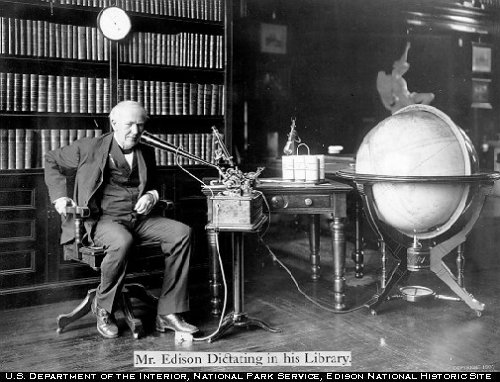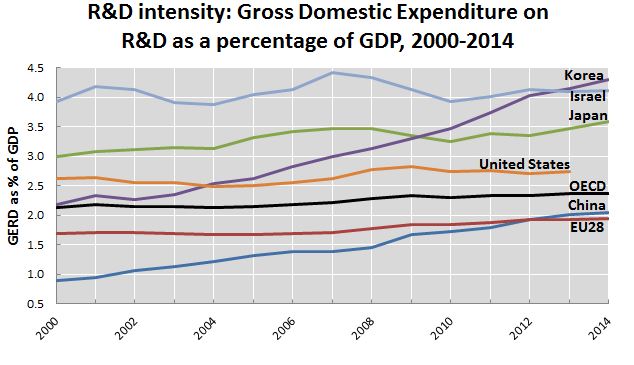
U.S. inventor Thomas Edison speaks into an Edison Dictating Machine, circa 1907. (US Department of the Interior)
The United States leads the world in innovation but could soon lose its competitive edge.
A Washington, D.C.-based think tank ranked the U.S. 10th when it comes to government policies in support of global innovation, behind countries like Finland, Sweden and the United Kingdom.
“We’ve kind of enjoyed this huge lead since basically the end of World War II or slightly before, so much so that in the 70s or 80s we couldn’t imagine the U.S. being outperformed in the top industries,” said Adams Nager, an economic policy analyst at Information Tecnology and Innovation Foundation (ITIF). “All of these other countries are fighting for advantages…and the U.S. is, in this race for innovation supremacy, pretty complacent right now.”
ITIF looked at factors such as investments in research and development, education, and tax incentives for innovation to determine country rankings.
South Korea spends 4.3 percent of its overall gross domestic product (GDP) on research and development, the most of any country, according to the Organization for Economic Co-operation and Development, which works on economic development with governments.
The United States ranked fourth at 2.7 percent of GDP, behind Israel and Japan. China is spending more than ever on R&D, in 2014 reaching a milestone of 2 percent of GDP.

Graphic: Organization for Economic Co-operation and Development)
The U.S. still spends far more on R&D — about $450 billion in 2013 — than any other country, but percentage-wise, U.S federal R&D spending is at its lowest point since 1956. Meanwhile, China doubled its R&D spending between 2008 and 2012.
So what happens if the U.S. loses its innovation edge?
“The loss in terms of economic value is immense,” said Nager. “If we lose out on that, suddenly there’s not as many scientists and engineers who want to come here. They all want to go elsewhere. You have more imports and fewer exports because we’re importing these new technologies.”
One bright spot is that the private sector is spending more on research and development. R&D spending by American companies rose 6.7 percent in 2014, the biggest increase since 1996, according to U.S. Commerce Department data.
More About America
More Than One-Third of Top US Innovators Are Immigrants
Americans Work More Than Just About Anyone
This Map Shows Where US Job Market Is Booming
Most US Wealth Concentrated in These 10 Areas
The Big Freeze Is Coming to These US Jobs






















It will be interesting to compare the dependence of all these R&D on the real innovation in economic results, not the laboratory samples.Inventions in the industrially weak economics dewelopes slowly.
Yes, I think I have become aware of this; no numbers, but the innovations I see online or read about online coming from other countries have been astounding while announcements of large scale innovations in the U.S. have been lackluster. I find myself wondering what this means. If this perception is accurate, I am deeply fearful of our nation’s place in the list of first world nations.